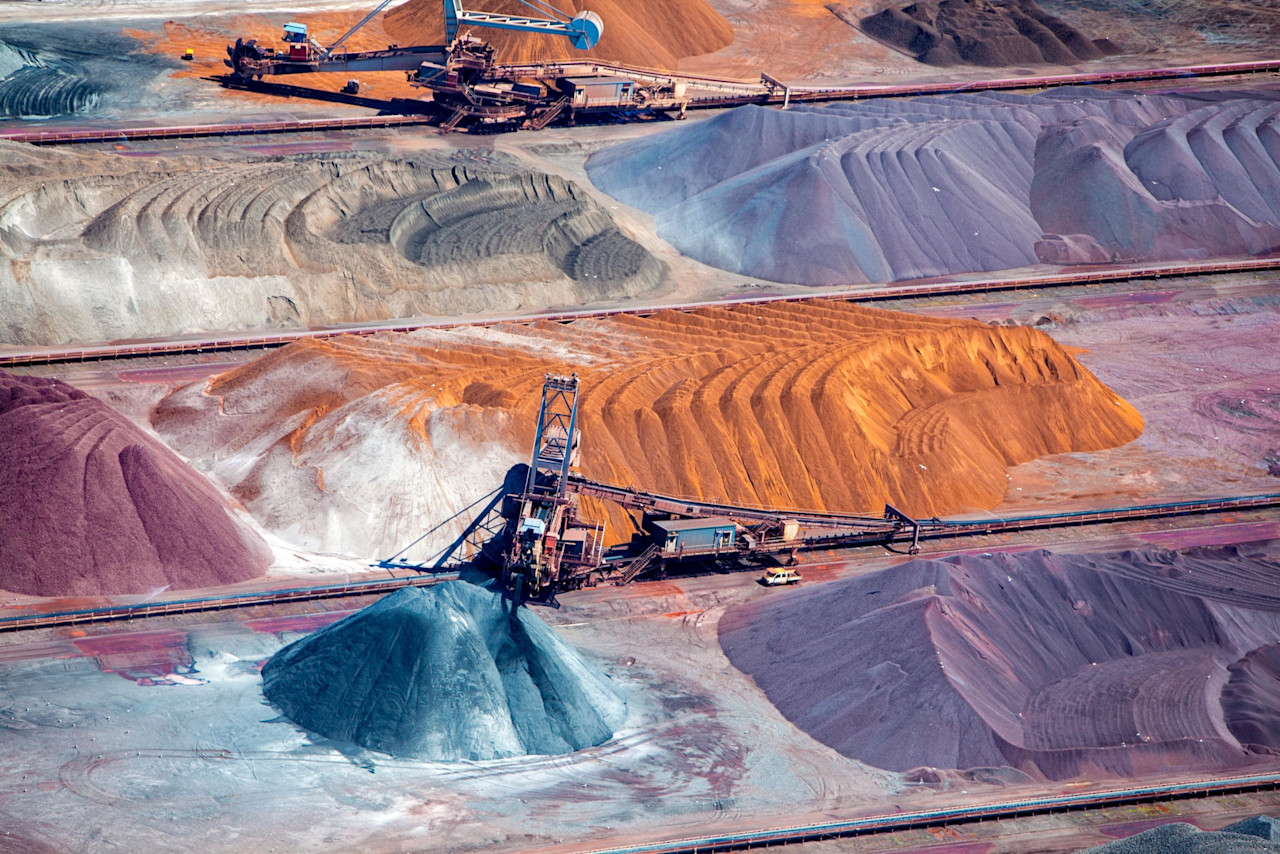

Reduce, recycle, reshore: localization is revving up the circular revolution
While reshoring doesn’t feature among the circular economy’s traditional refrain of ‘reduce, reuse, recycle’, it does act as a catalyst to promote a host of circular solutions. With a strong focus on IT, AI and industrials as well as domestic suppliers, the circular economy strategy is well positioned to capture the short and long-term growth of reshoring waves.
まとめ
- Reshoring is gaining momentum amid high tensions and tariffs
- Reshoring promotes circularity, circularity facilitates reshoring
- Reshoring tailwinds strongest for Industrials, IT and local manufacturers
The Covid pandemic, escalating conflicts, and rising trade tensions have all exposed the vulnerabilities of offshore production and supply chains. Already in 2021, business executives cited cyberattacks, commodity price fluctuations, diverging regulations, and China’s slowdown behind the Covid pandemic as significantly disruptive supply chain events. Threats once thought to be temporary have materialized into structurally persistent costs of globalization. Spring forward to 2023 and mentions of “reshoring” in earnings calls of S&P 500 companies were up 128% compared to a year earlier. More impressively, US manufacturing construction is booming (see Figure 1). Likewise, 78% of EU business executives from diverse sectors planned on moving parts of their supply chains back home, according to a UBS survey. 1
Figure 1 – A boom in spending in US manufacturing construction

Source: US Census Bureau, Bloomberg, March 2024. US Manufacturing Boom is about more than EVs and chips.
Reshoring promotes circular solutions
Reshoring reduces supply chain length and complexity. This not only improves resilience and reliability, it also reduce emissions and waste associated with long-haul transport. Furthermore, reshoring adds visibility and control enable companies to invest in circular solutions, especially those enhanced with AI technologies.
Industrial engineers and project developers are adopting AI powered circular solutions to avoid bottlenecks, minimize material use, reduce waste. This reduces costs and accelerates reshoring construction efforts. Once operational, companies can deploy more AI-enhanced solutions that conserve resources and improve margins while reducing waste and pollution. Using AI models, companies are better able to predict domestic demand, adjust inventories, and accelerate material sourcing while at the same time reducing operational inefficiencies, product waste and short-haul emissions.
Reshoring also comes with downsides, especially for EU and US markets. Robust regulatory systems, skilled labor shortages and limited access to critical raw materials all make reshoring more costly for EU and US companies. The upside to these challenges is that they are also forcing companies to embrace circular economy principles that reduce wasteful inefficiencies, improve material recovery and enhance labor productivity.
Circular solutions reduce costs of reshoring
Domestically based predictive maintenance and repair operation (MRO) networks are also driving down inflationary costs. Not only do MROs reduce costly equipment breakdowns and short-term operational expenses, they also keep machinery optimally running over longer lifetimes, reducing companies’ long-term capital expenses. Moreover, AI is significantly mitigating wage inflation and labor shortages. By leveraging automation and robotics, companies can streamline processes and reduce reliance on manual labor.
Figure 2 – Robotics is growing alongside reshoring

In the US, industrial robotic installations are growing. Source: U.S. Companies Invest Heavily in Robots - IFR Preliminary Results - International Federation of Robotics. April 2024.
Closer proximity to local markets means companies can adapt more quickly and efficiently to local regulations, such as the US IRA’s domestic procurement requirements or the EU’s recycled content mandates. AI-powered robotics are also aiding and abetting these efforts. Computer vision and machine learning are enabling the efficient recovery and recycling of valuable materials in product waste streams. Predictive analytics is also being used to evaluate suppliers based on important factors such as costs, location, quality, customization, emissions, and other sustainability.

Celebrating five years of investing for healthy returns and a healthy planet
The Circular Economy strategy is coming full circle
Reshoring good for domestic growth
Reshoring encourages manufacturers to procure materials from domestic sources rather than imports. Moreover, reshoring contributes to increased investment in infrastructure. As companies build new factories and expand existing ones, there is a corresponding multiplier effect across a wide range of industries, from steel and cement to logistics and transportation.2 Bank of America research estimates that for every USD 10 billion of manufacturing revenue that is moved back to the U.S., there is around USD 3.8 billion of capex spending.3 In addition, according to one study, 7.4 new jobs are created in other industries for every durable manufacturing job generated by a reshoring project.4
Riding the waves to reshore
Circular solutions are well positioned to benefit from tailwinds created by the reshoring renaissance. The strategy has a mid-cap tilt, which benefit disproportionately from robust local demand and strong domestic growth relative to international conglomerates.
Industrials and technology companies that provide robotics and automation are set to be the biggest beneficiaries from government efforts to reshore manufacturing in strategic technologies such as chips, EVs and electric grid infrastructure.5 But growth is also spreading beyond artificial arms and neural networks to higher-value products that require more sophisticated manufacturing including high-end appliances, chemicals, medical supplies, logistics and transportation.6 Not only is the strategy rife with to these diversified areas, but it is also diversified by size, given many of its holdings in there companies are smaller large caps as well as mid- and small caps.
Regardless of size, lower interest rates will enable manufacturers to finance large investments into tech and automation to further boost productivity, growth and expansion.
Figure 3 – Strong sector and market cap diversification

Source: Robeco. This is the current overview as of 31.12.2024 and not a guarantee of future developments. It should not be assumed that any investments in sector or market cap identified were or will be profitable.
Conclusion
Reshoring is set to flourish driven by supply chain disruptions, tightening tariffs, and incentive-heavy industrial policies. However, labor, regulatory and resource constraints raise the cost of doing business in the EU and US. That makes circular solutions an increasingly valuable commercial proposition for local businesses and global companies that reshore or invest in these markets.
The circular economy strategy is well-positioned to capture short and long-term growth from these important structural trends. Strong exposure to AI, automation, and smart manufacturing means the strategy will benefit from their positive impact on resource efficiency, productivity, and profitability. Moreover, exposure is balanced across large, small and midcap stocks. These companies can invest more intensively in circular innovation as well as benefit disproportionately from domestic incentives compared to international firms.
Longer term, by forcing companies to confront resource efficiency alongside productivity and profitability, reshoring trends are helping unlock sustainable production models and revving up the circular revolution.
Footnotes
1 CNBC, June 2023. Reshoring more domestic manufacturing due to supply chain disruption. June 2023.
2 https://manufacturing-today.com/news/why-the-reshoring-renaissance-is-the-future-of-u-s-manufacturing/
3 Bank of America. October 2024. “Regional Morsel: Reshoring grows roots in the South and Midwest.”
4 American Century Investments, 2024. Economic Policy Institute, 2019. “Reshoring reaches mid-America.”
5 Wall Street Journal. January 2024. Midcap stocks are often ignored. They shouldn’t be.
6 MIT, Sloan Management Review. November 2023. A Reshoring Renaissance Is Underway.
最新のインサイトを受け取る
投資に関する最新情報や専門家の分析を盛り込んだニュースレター(英文)を定期的にお届けします。
重要事項
当資料は情報提供を目的として、Robeco Institutional Asset Management B.V.が作成した英文資料、もしくはその英文資料をロベコ・ジャパン株式会社が翻訳したものです。資料中の個別の金融商品の売買の勧誘や推奨等を目的とするものではありません。記載された情報は十分信頼できるものであると考えておりますが、その正確性、完全性を保証するものではありません。意見や見通しはあくまで作成日における弊社の判断に基づくものであり、今後予告なしに変更されることがあります。運用状況、市場動向、意見等は、過去の一時点あるいは過去の一定期間についてのものであり、過去の実績は将来の運用成果を保証または示唆するものではありません。また、記載された投資方針・戦略等は全ての投資家の皆様に適合するとは限りません。当資料は法律、税務、会計面での助言の提供を意図するものではありません。 ご契約に際しては、必要に応じ専門家にご相談の上、最終的なご判断はお客様ご自身でなさるようお願い致します。 運用を行う資産の評価額は、組入有価証券等の価格、金融市場の相場や金利等の変動、及び組入有価証券の発行体の財務状況による信用力等の影響を受けて変動します。また、外貨建資産に投資する場合は為替変動の影響も受けます。運用によって生じた損益は、全て投資家の皆様に帰属します。したがって投資元本や一定の運用成果が保証されているものではなく、投資元本を上回る損失を被ることがあります。弊社が行う金融商品取引業に係る手数料または報酬は、締結される契約の種類や契約資産額により異なるため、当資料において記載せず別途ご提示させて頂く場合があります。具体的な手数料または報酬の金額・計算方法につきましては弊社担当者へお問合せください。 当資料及び記載されている情報、商品に関する権利は弊社に帰属します。したがって、弊社の書面による同意なくしてその全部もしくは一部を複製またはその他の方法で配布することはご遠慮ください。 商号等: ロベコ・ジャパン株式会社 金融商品取引業者 関東財務局長(金商)第2780号 加入協会: 一般社団法人 日本投資顧問業協会




















